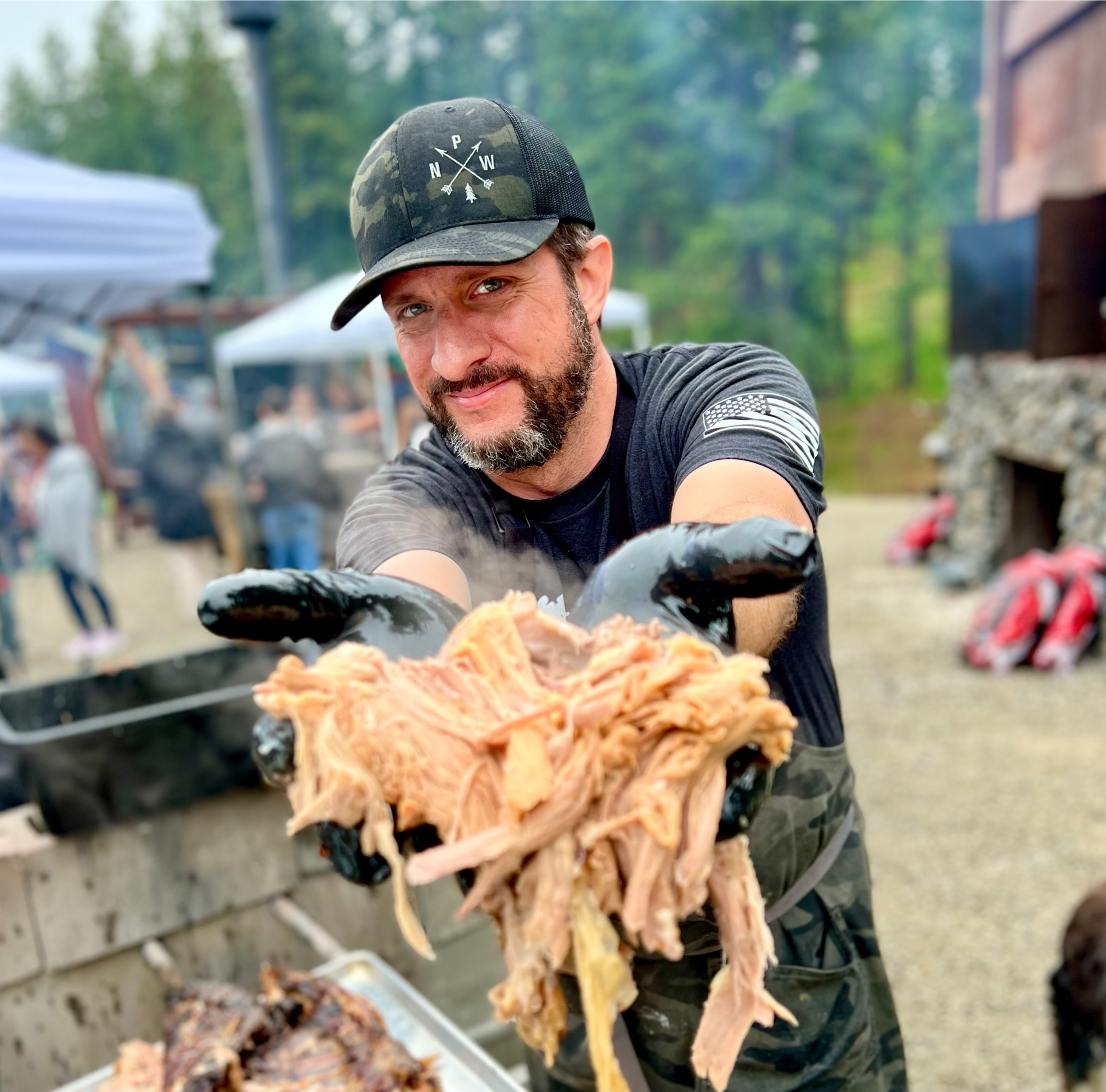This page is dedicated to tips, tricks, and terms that will help you ease into the wonderful world of smoking.
I will update this page as I go along. Thanks for your patience.
3-2-1 method: a popular method for barbecue ribs, which consists of three hours of smoke exposure, two hours wrapped in foil, then one hour unwrapped and back on the smoker.
Baby back ribs: most tender and lean ribs, connected at the spine and beneath the loin muscle of a pig. Meatier, curved, and usually short, hence the name; NOT from baby pigs
BBQ, barbecue, barbeque: the process of cooking food using smoke over long periods of time. Spelled in different ways, but means the same thing.
Bark: the outer portion of the meat that starts to form an outer crust of sorts via the time exposed to smoke and heat.
Brine: a method used to bring out flavor in meat before you cook it. Commonly done with water, salt, and sugar. Can also be done without water, considered a dry brine.
Caveman: the method of cooking meat by placing it directly on the ashed-over wood or coals.
Cold smoke: the process of smoking at lower temperatures than normal, usually between 75-100 degrees F; easier to be done in the winter months.
Cured meat (or vegetables): the flavoring and food preservation process; mostly involves smoking, cooking, or spicing. Note: nitrates are common in this process.
Frenched: cleaning of the meat, fat, and cartilage between the tips of the bones on a cut of meat; also makes for a cleaner presentation.
Gasket: a seal that helps tighten the space between two surfaces; with a smoker, it helps keeps the lid tight so heat doesn’t escape.
Green ham: a ham that has neither been smoked nor cured previously.
Indirect heat: cooking food via smoke, usually done with a heat source away from the food being cooked, but still close enough to absorb the smoke and lower amounts of heat; some consider this the true way to barbecue.
Kamado: a Japanese-style smoker which is shaped like an urn or an upside down egg. For example, Big Green Egg brand is a Kamado smoker.
Marbled meat: meat that has spots of fat interwoven into it, presenting a marble-like appearance; mainly in red meat.
Offset firebox smoker: consists of three main parts: 1) the main chamber, the largest part, in which the food is cooked by indirect heat; 2) the firebox, the smaller box in which you generate heat with charcoal and/or wood, in which the smoke for the main chamber flows from; and 3) the chimney, or smoke stack, in which the smoke exits the smoker.
Pitmaster: one who is in charge of the barbecue; can also be used as a compliment to someone who barbecues very well.
Reverse sear: the searing of meat at the end of the cook, or in our case a smoke, instead of at the beginning.
Sear: to burn or char the surface of a piece of meat; done to seal in the juices.
Sous-vide: a method of slow cooking that involves sealing food in an airtight bag and submerging in water to be cooked at a low temperature (around 130°-140°F or 55°-60°C) for hours, sometimes days depending on the thickness of the meat.
Spatchcock: the removal of the backbone and sternum (sometimes) of poultry or game and flattening it out before cooking.
St. Louis-style ribs: usually longer and flatter than baby back ribs, in a rectangular cut. A lot of bone and a lot of fat, which makes them quite flavorful. Rib tips come from these.
Stall: the point at which meat reaches a certain temperature and holds for hours. Can cause panic, especially when trying to get done at a specific time.
